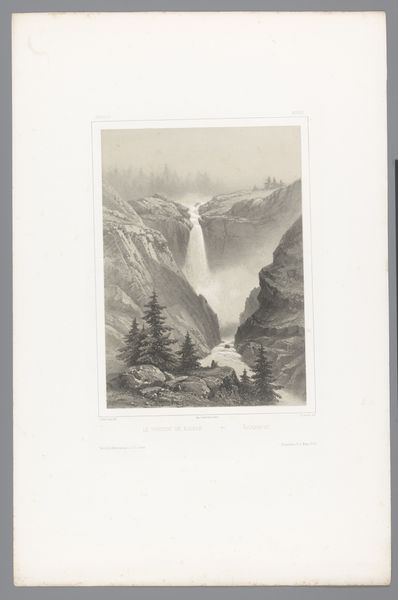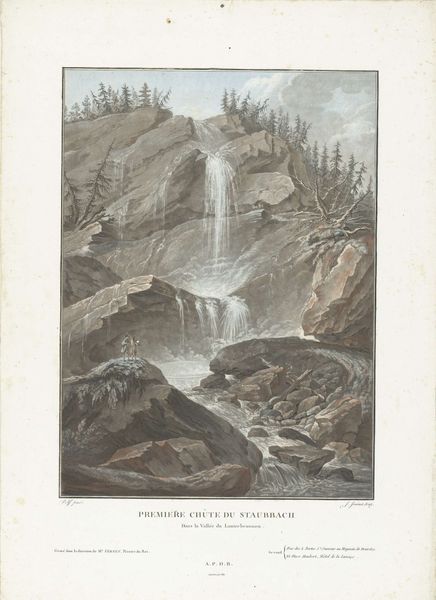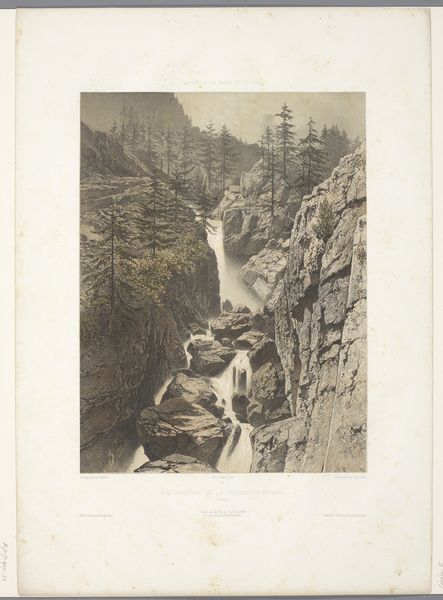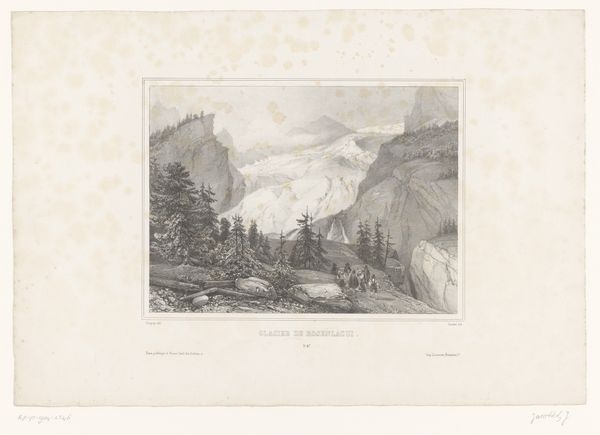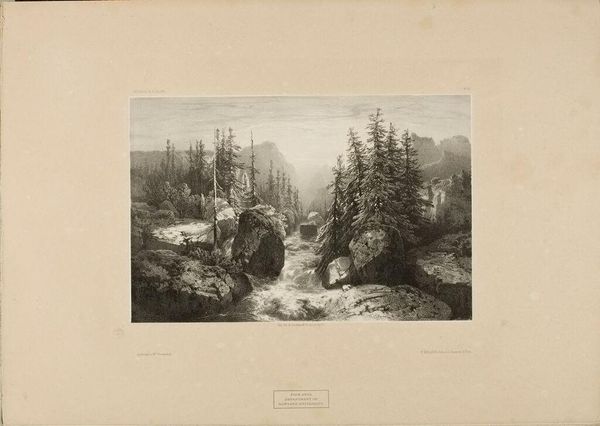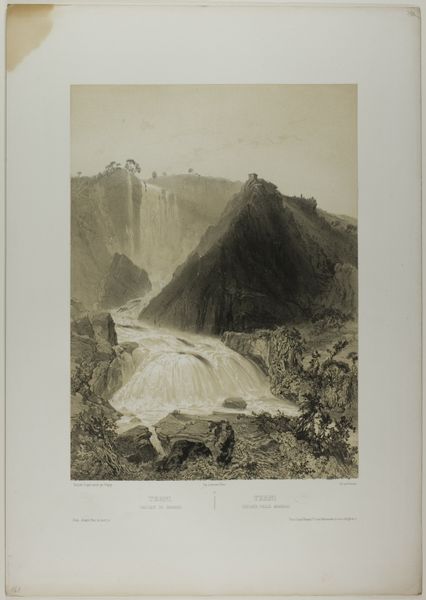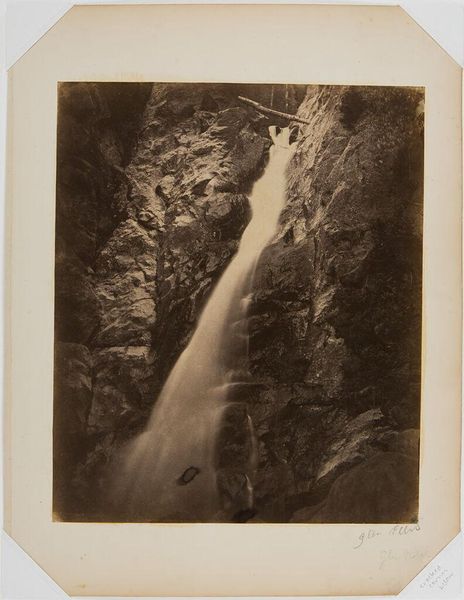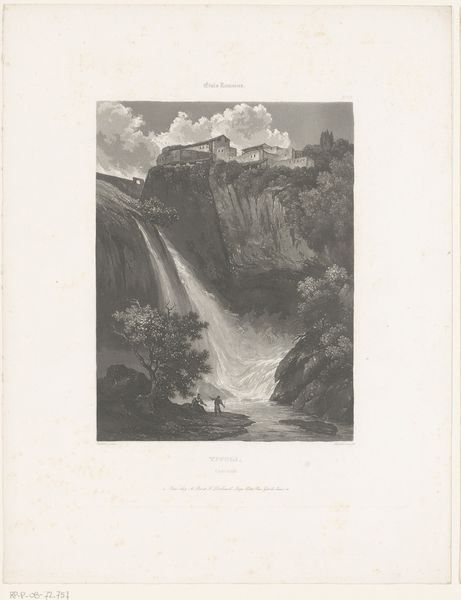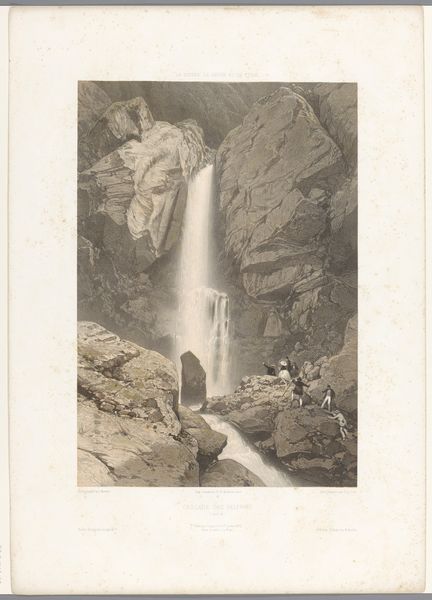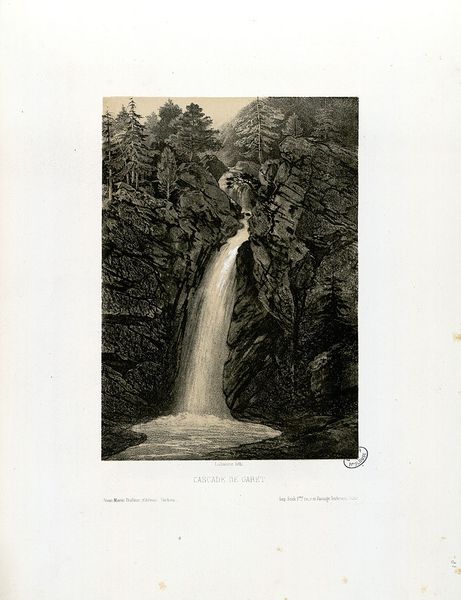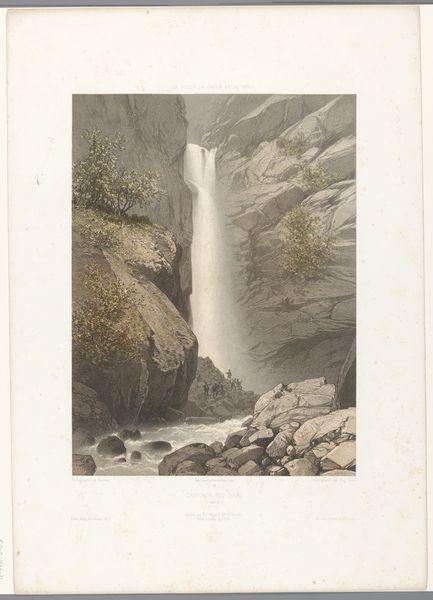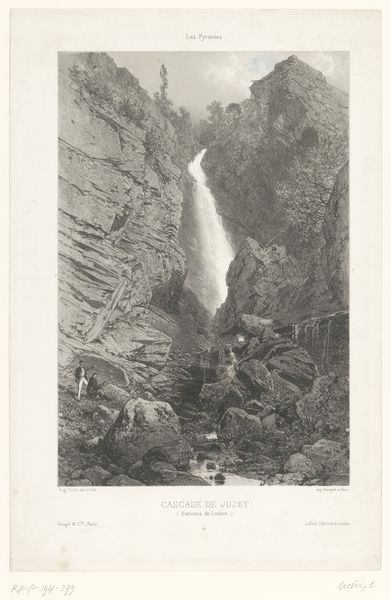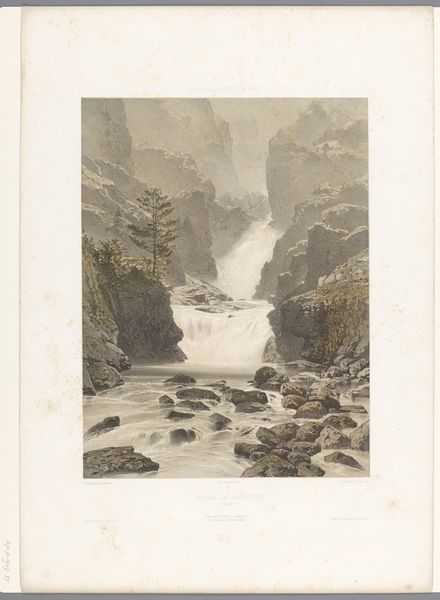
print, photography, engraving
#
tree
# print
#
pencil sketch
#
landscape
#
waterfall
#
text
#
photography
#
pencil drawing
#
water
#
engraving
Copyright: Public domain
Curator: What strikes you first about this engraving, “Le Pont d’Espagne (Chûte Supérieure)" by Maxime Lalanne? Editor: It has such a stark, romantic quality. The black and white contrast emphasizes the sheer force of the waterfall amidst the detailed forestry. It reminds me a bit of early photography experiments. Curator: Indeed. It's an interesting piece because it combines the reproducibility of printmaking with the artistic aspirations of landscape painting. Let’s delve into Lalanne’s choice of engraving. Unlike a unique painting, this medium allowed for wider distribution and, thus, accessibility to a larger audience who perhaps couldn't visit these locations themselves. Editor: That raises interesting questions about accessibility, doesn't it? Who was consuming these prints? Was it the burgeoning middle class seeking picturesque views of nature to hang in their homes? Curator: Precisely. The print serves almost as a souvenir, bringing a touch of the sublime directly into the domestic sphere, while the choice of a location in the Pyrenees speaks volumes about the contemporary interest in nature and picturesque landscape associated with early tourist circuits. It speaks to ideas of accessibility and travel, while it’s consumed in one's own home. Editor: Considering the materials and production, there’s a dialogue to be had regarding how these printed landscapes were perceived. Was it considered ‘art’ in the same vein as painting? Were they valued differently, considering the reproductive process involved? The hand is less directly present, but there's still considerable skill involved. Curator: Those distinctions between ‘high art’ and printmaking are fascinating. This was a period when printmakers were striving for recognition, and the rise of photography further complicated their status. This also informs institutional shifts. Where were such images collected? By whom were they exhibited and to what extent? These processes would all factor in how value was assigned to art in the 19th century. Editor: Thinking about the institutions presenting this type of art and considering photography, how might technological advances have shaped the popular perception of landscape art? This work certainly blurs the lines between purely artistic endeavor and documentation. Curator: Exactly! The rise of mechanical reproduction also created anxiety amongst some artists, concerned that it would diminish the unique value of their handmade works. On the other hand, it fostered the opportunity to show and market artistic works to wider publics, and facilitated artistic experimentation that would further complicate definitions of “art,” like those explored by Lalanne here. Editor: Looking at this engraving allows us to rethink how art functions within a social and economic context, blurring the line between mass-produced goods and the unique auratic object. Curator: And to think about how art and cultural institutions continuously re-evaluate that relationship even today.
Comments
No comments
Be the first to comment and join the conversation on the ultimate creative platform.
